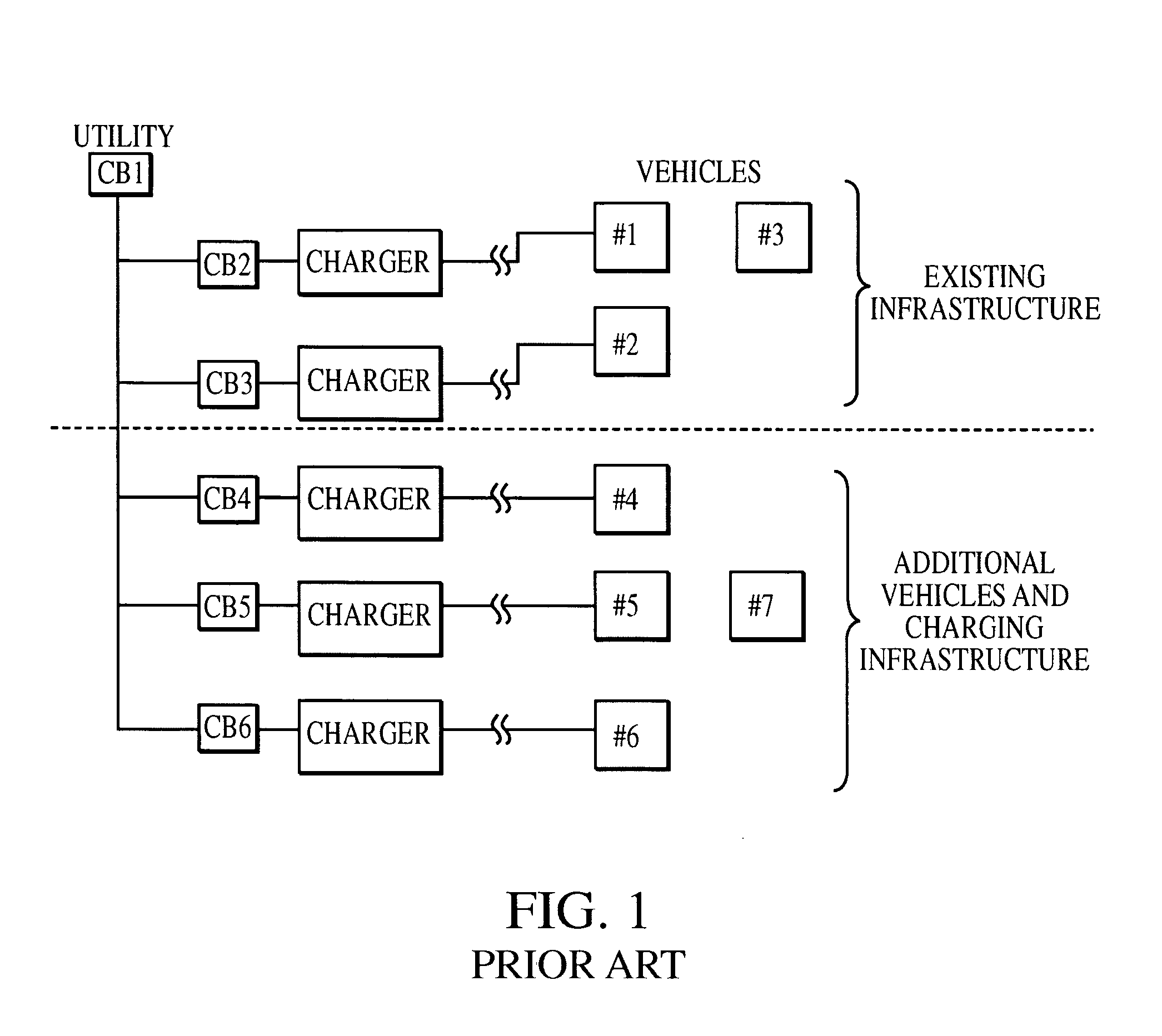Battery charging system and method
a battery and charging system technology, applied in battery/fuel cell control arrangement, electrochemical generators, transportation and packaging, etc., can solve the problems of increasing the current carried by the system circuit breaker, needing to be upgraded, and large capital expenditures, so as to reduce the cost per charger, prevent the need for additional capital expenditures, and maximize the return on capital investment
- Summary
- Abstract
- Description
- Claims
- Application Information
AI Technical Summary
Benefits of technology
Problems solved by technology
Method used
Image
Examples
first embodiment
[0030]an electrical power distribution system according to the present invention is a vehicle charging system 100 shown in FIG. 3A. The charging system includes a system controller, a power processor 102 and a series of one or more (and preferably a plurality of) secondary power ports 104 that are configured for connecting to the batteries of one or more vehicles 106 (i.e., to loads placed on the distribution system). Each secondary power port has a power rating, which is preferably adequate to meet the charging needs of vehicles that will be charged via that secondary power port. The sum of the secondary power ports' power ratings defines an aggregate output power rating.
[0031]The charging system 100 preferably receives power from a power system, e.g., a utility having an AC electrical system. This power is received by a primary power port 107A, which in turn provides the power to the power processor. The power is received by the primary power port through a circuit breaker 108A th...
PUM
 Login to View More
Login to View More Abstract
Description
Claims
Application Information
 Login to View More
Login to View More - R&D
- Intellectual Property
- Life Sciences
- Materials
- Tech Scout
- Unparalleled Data Quality
- Higher Quality Content
- 60% Fewer Hallucinations
Browse by: Latest US Patents, China's latest patents, Technical Efficacy Thesaurus, Application Domain, Technology Topic, Popular Technical Reports.
© 2025 PatSnap. All rights reserved.Legal|Privacy policy|Modern Slavery Act Transparency Statement|Sitemap|About US| Contact US: help@patsnap.com



